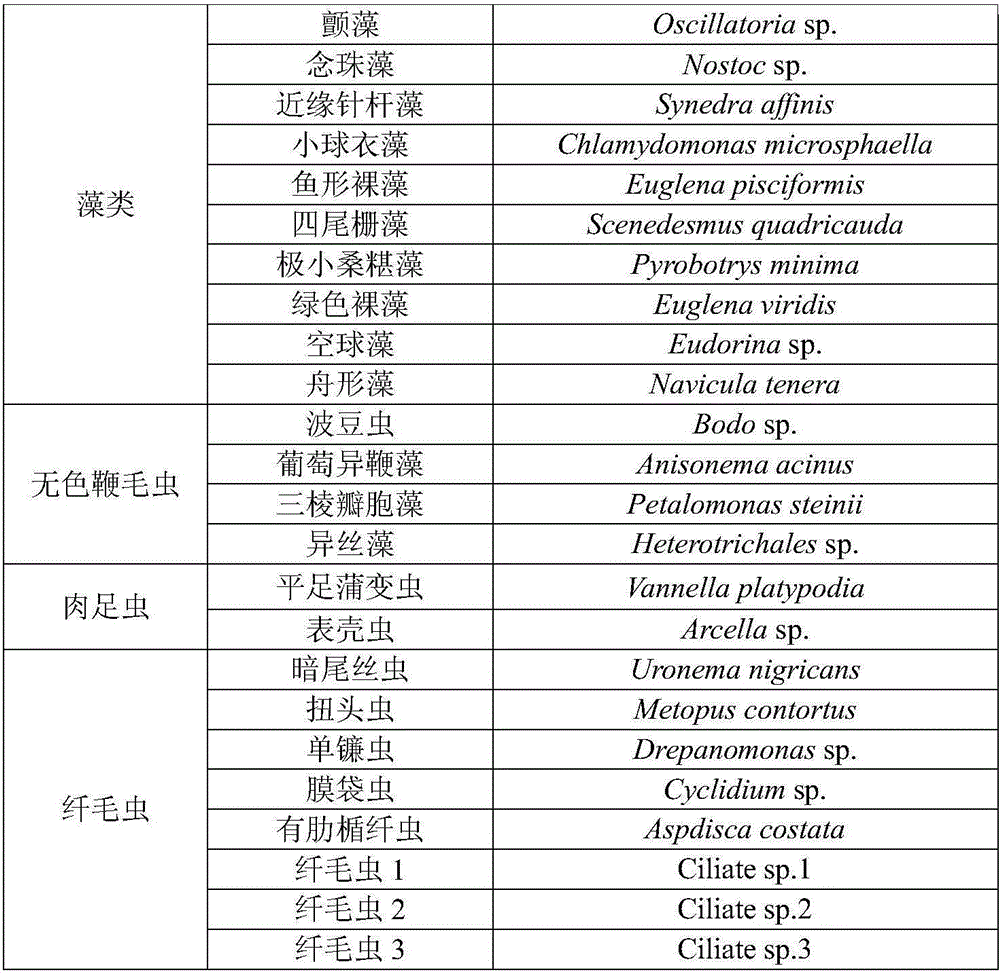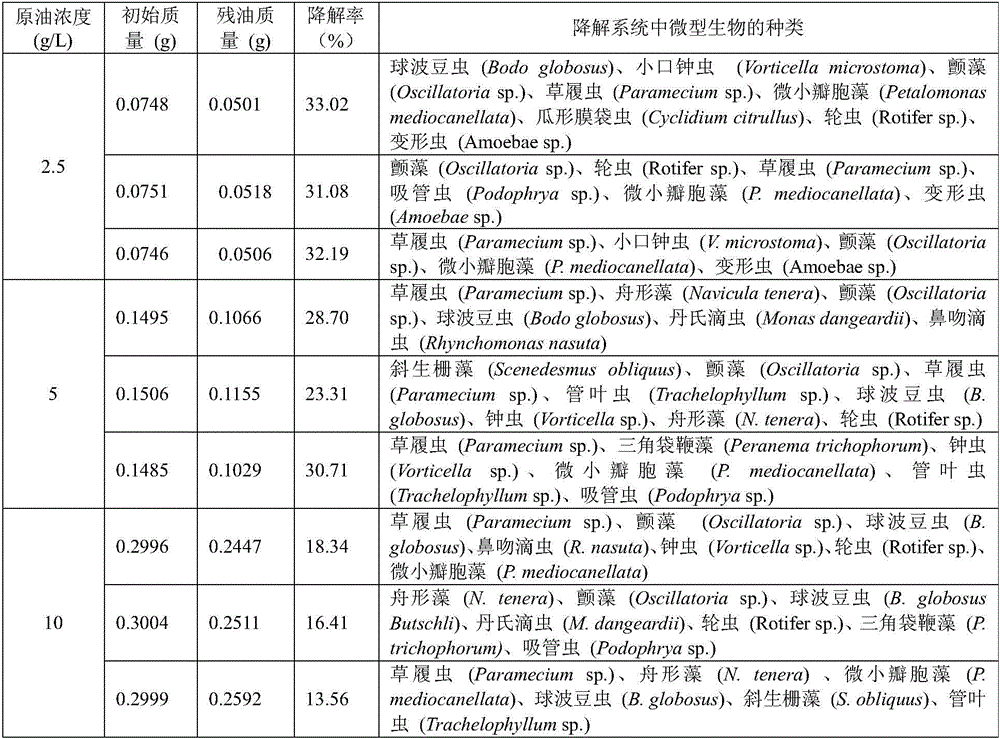A method of using pfu to collect microbiological communities to degrade petroleum
A technology of microbial communities and micro organisms, which is applied in the field of oil pollution in waters degraded by micro-biological communities, can solve the problems of easy degradation of strains, cumbersome screening steps, and reduced oil degradation ability, and achieve easy acquisition, low cost, and shortened cycle Effect
- Summary
- Abstract
- Description
- Claims
- Application Information
AI Technical Summary
Problems solved by technology
Method used
Image
Examples
Embodiment 1
[0030] Example 1 Degradation of Crude Oil by Microbial Community
[0031] The microbiological community was collected in Huanghuagou, Baoding, a flowing river, and the collection time was April 2010.
[0032] Before collecting, first check the integrity of the micro-biological community in the sampled waters. The specific method: use No. 25 plankton net to sample, and check the sample with a laboratory microscope after collection. Algae, flagellates, sarcoids, ciliates, etc. should be observed in the samples Microorganisms.
[0033] The initial microbiological community structure of Huanghuagou is shown in Table 1.
[0034] Table 1
[0035]
[0036]
[0037] It can be seen from Table 1 that the microbiological community in Huanghuagou at this time is complete, including all major microbiological groups, and is suitable for collection.
[0038] a. Cut the PFU into a 1cm×1cm×1cm square, soak it in physiological saline at 20°C for 24h, take it out and rinse it with steri...
Embodiment 2
[0046] The microbiological community was collected in April 2010 under the Anxin Bridge in Baiyangdian, Baoding, which is a still water body.
[0047] Before collecting, first check the integrity of the micro-biological community in the sampled waters. The specific method: use No. 25 plankton net to sample, and check the sample with a laboratory microscope after collection. Algae, flagellates, sarcoids, ciliates, etc. should be observed in the samples Microorganisms.
[0048] Table 3 shows the initial microbiological community structure of Anxin Bridge lake water.
[0049] table 3
[0050]
[0051] It can be seen from Table 3 that the microbiological community in the lake under the Anxin Bridge at this time is complete, including all major microbiological groups, and is suitable for collection.
[0052] a. Cut the PFU into a square of 1cm×1cm×1cm, soak it in normal saline at 25°C for 24h, take it out and rinse it with sterile water for 3 times, squeeze out the water, and dr...
PUM
 Login to View More
Login to View More Abstract
Description
Claims
Application Information
 Login to View More
Login to View More - R&D
- Intellectual Property
- Life Sciences
- Materials
- Tech Scout
- Unparalleled Data Quality
- Higher Quality Content
- 60% Fewer Hallucinations
Browse by: Latest US Patents, China's latest patents, Technical Efficacy Thesaurus, Application Domain, Technology Topic, Popular Technical Reports.
© 2025 PatSnap. All rights reserved.Legal|Privacy policy|Modern Slavery Act Transparency Statement|Sitemap|About US| Contact US: help@patsnap.com



